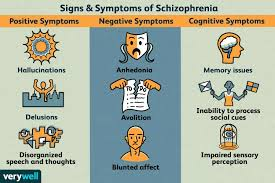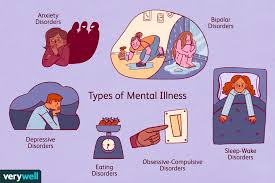The lead nurse is orienting a new nurse in a mental health unit about the roles of the nurse in Cognitive Behavioral Therapy (CBT). Which statement made by the new nurse demonstrates an understanding of the role of the nurse in CBT? (Select all that apply.)
Assessing the client's readiness for therapy.
Implementing therapeutic techniques that involve the client's family only.
Educating the client to identify and challenge negative thoughts.
Evaluating to determine the effectiveness of the actions.
Collaborating with the client to set achievable goals.
Correct Answer : A,C,D,E
Choice A Reason:
Assessing the client's readiness for therapy is a crucial role of the nurse in CBT. It involves determining whether the client is willing and able to participate in therapy, understands the CBT process, and is motivated to engage in the cognitive and behavioral changes that CBT requires. This assessment helps ensure that the therapy is client-centered and tailored to the individual's specific needs and readiness level.
Choice B Reason:
While involving the client's family can be beneficial in therapy, implementing therapeutic techniques that involve only the client's family does not align with the primary goals of CBT. CBT focuses on the individual's patterns of thinking and behavior, and while family support can be part of the process, the nurse's role is not limited to family involvement alone.
Choice C Reason:
Educating the client to identify and challenge negative thoughts is a fundamental aspect of CBT. The nurse helps the client recognize their automatic negative thoughts, understand the impact these thoughts have on their emotions and behavior, and learn to challenge and reframe these thoughts in a more positive and realistic way.
Choice D Reason:
Evaluating to determine the effectiveness of the actions is part of the nurse's role in CBT. This involves monitoring the client's progress, assessing the outcomes of the interventions, and making necessary adjustments to the treatment plan. Evaluation is an ongoing process that ensures the therapy is effective and meets the client's needs.
Choice E Reason:
Collaborating with the client to set achievable goals is essential in CBT. The nurse works with the client to establish clear, measurable, and attainable goals that guide the therapy process. These goals provide direction and motivation, and they help the client focus on making specific changes that will improve their mental health.
Nursing Test Bank
Naxlex Comprehensive Predictor Exams
Related Questions
Correct Answer is ["B","C","D","E"]
Explanation
Choice A Reason:
Schizophrenia cannot be cured with antidepressants. Antidepressants may be used to treat comorbid depression in individuals with schizophrenia, but they do not address the core symptoms of schizophrenia itself. Schizophrenia is a chronic condition that typically requires lifelong treatment with antipsychotic medications to manage symptoms.
Choice B Reason:
Schizophrenia typically first presents in adolescence or early adulthood. This is the period when symptoms such as hallucinations, delusions, and disorganized thinking often first become apparent. The onset of schizophrenia during this developmental stage can significantly impact an individual's social and vocational abilities.
Choice C Reason:
Antipsychotic medications are the cornerstone of schizophrenia treatment. They can be used to manage symptoms of hallucinations and delusions, which are known as positive symptoms of schizophrenia. These medications work by affecting neurotransmitters in the brain, particularly dopamine.
Choice D Reason:
Individuals with schizophrenia have a higher risk of substance abuse disorders. Substance use can exacerbate symptoms of schizophrenia and complicate the course of the illness. It is important for treatment plans to address any co-occurring substance use disorders.
Choice E Reason:
Schizophrenia significantly affects thoughts and perceptions. It can cause distorted thinking patterns, false beliefs, and sensory experiences that others do not share. These symptoms can be distressing and may lead to difficulties in distinguishing reality.

Correct Answer is A
Explanation
Choice A Reason:
Supporting the client's wish to refuse prescribed medications is a direct demonstration of respecting the client's autonomy. Autonomy in nursing is the right to self-determination, where patients are provided with adequate information to make their own decisions based on their beliefs and values. By supporting the client's decision, the nurse acknowledges the client's capacity to make informed choices about their own health care, even if the choice is different from what the medical team suggests.
Choice B Reason:
Ensuring that the client understands expectations for participation is more about informed consent and education rather than autonomy. While it is related to autonomy, it does not directly demonstrate the ethical concept since it does not involve a decision made by the client.
Choice C Reason:
Explaining unit rules and policies about unacceptable behaviors is part of the education process and setting boundaries within the healthcare environment. This action is necessary for all clients but does not specifically address the client's autonomy in making personal health decisions.
Choice D Reason:
Encouraging client feedback about satisfaction with the facility experience is a way to involve clients in the evaluation process of the facility's services. While this can be seen as respecting the client's opinions, it is not a direct action of supporting the client's autonomous decisions regarding their treatment plan

Whether you are a student looking to ace your exams or a practicing nurse seeking to enhance your expertise , our nursing education contents will empower you with the confidence and competence to make a difference in the lives of patients and become a respected leader in the healthcare field.
Visit Naxlex, invest in your future and unlock endless possibilities with our unparalleled nursing education contents today
Report Wrong Answer on the Current Question
Do you disagree with the answer? If yes, what is your expected answer? Explain.
Kindly be descriptive with the issue you are facing.
